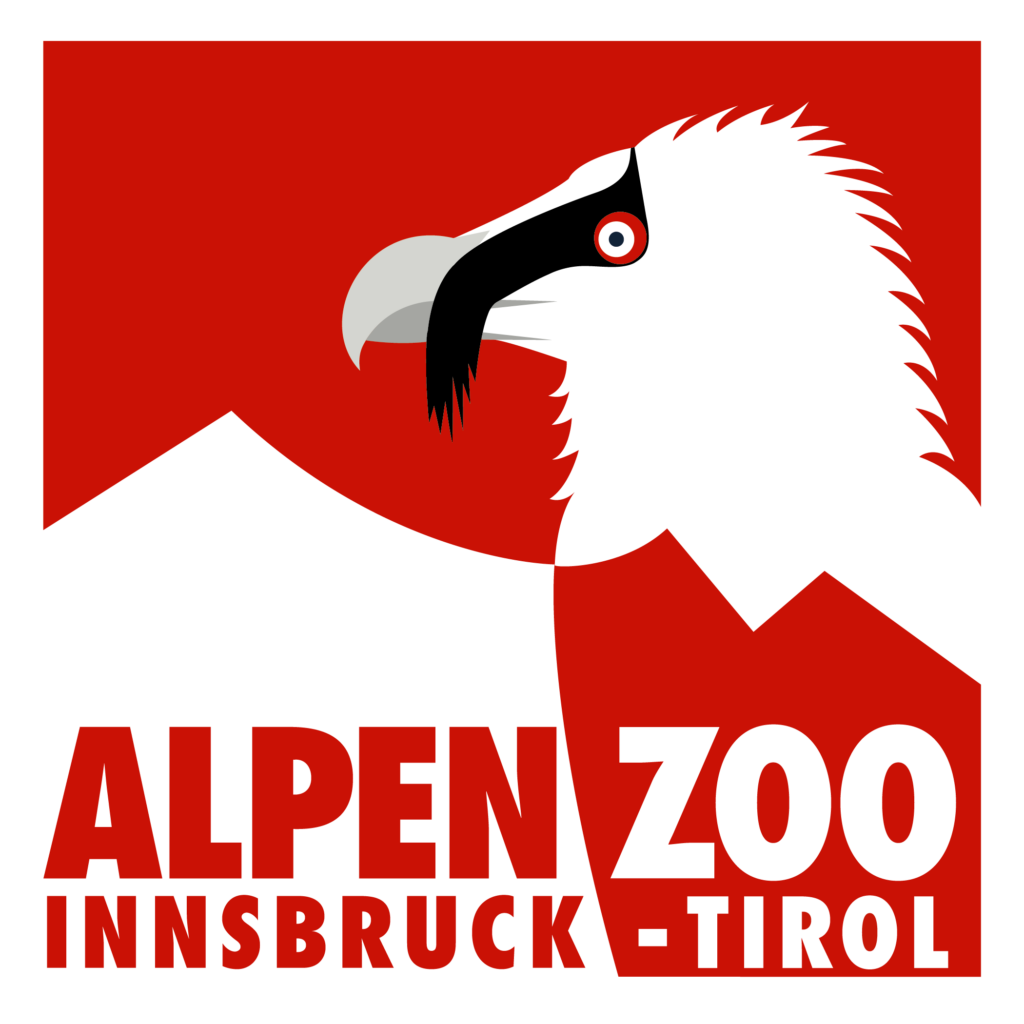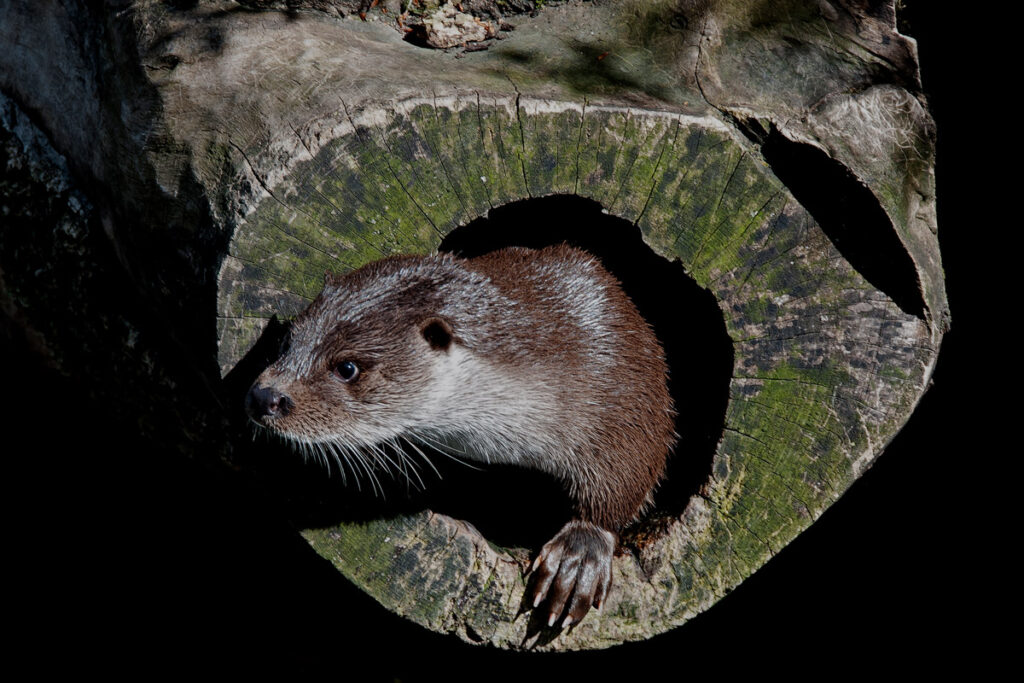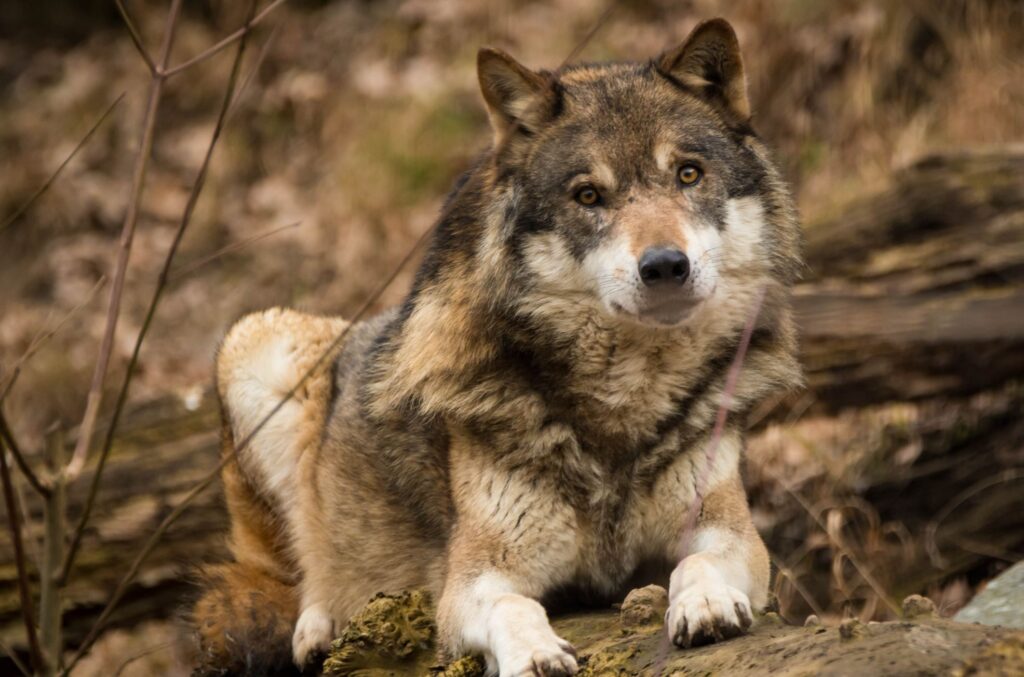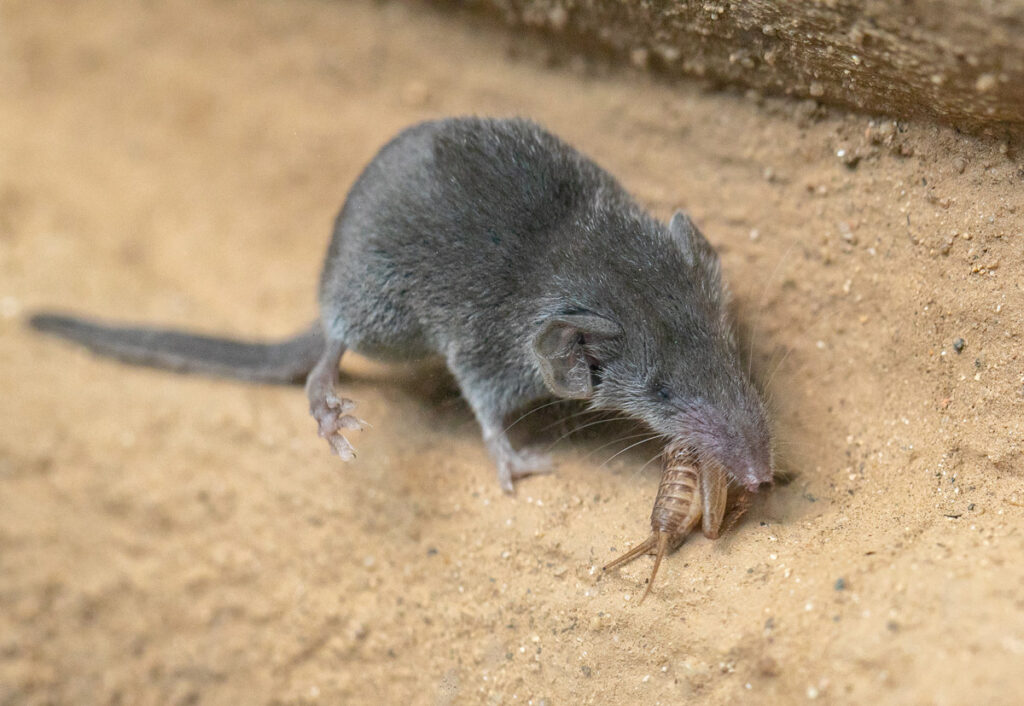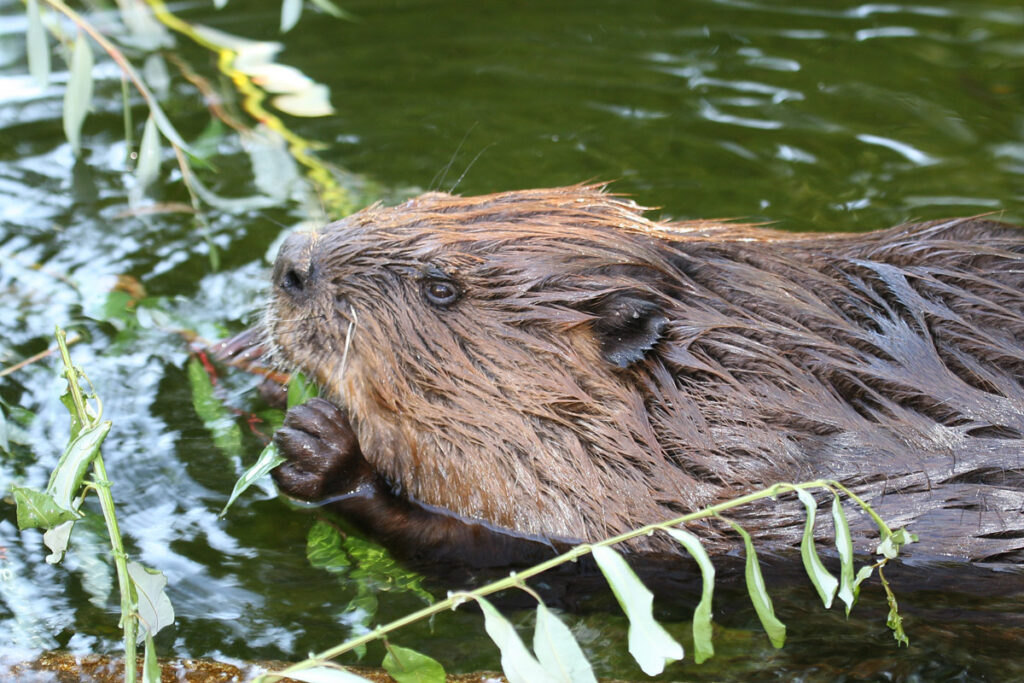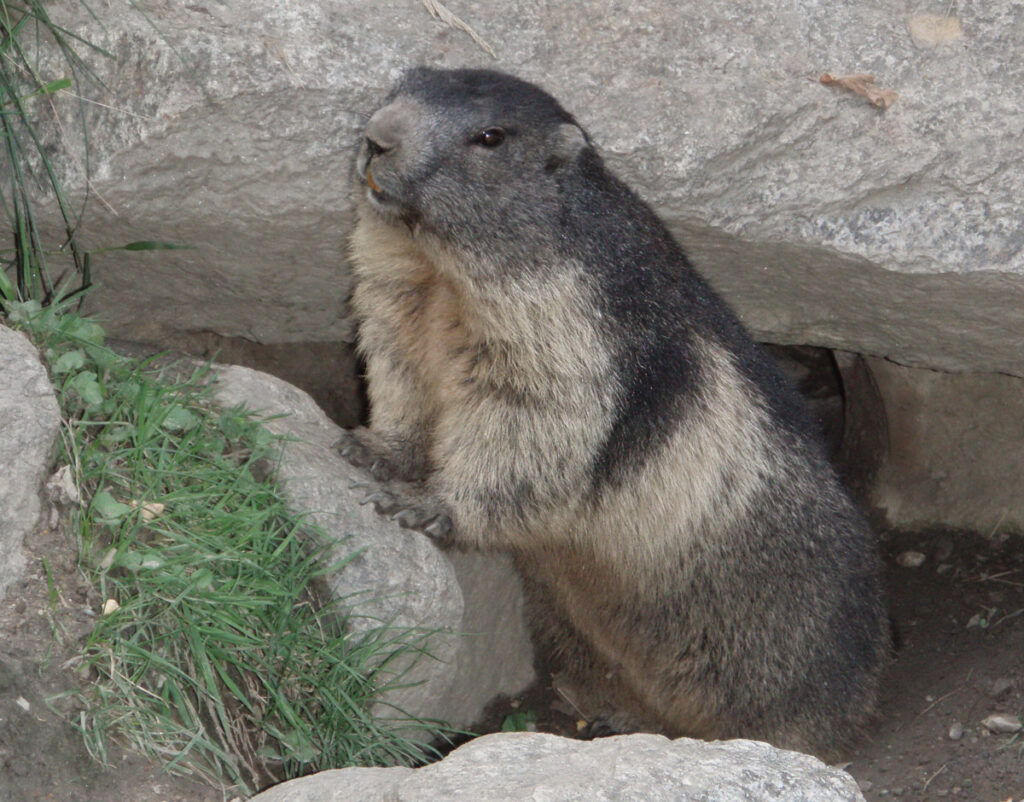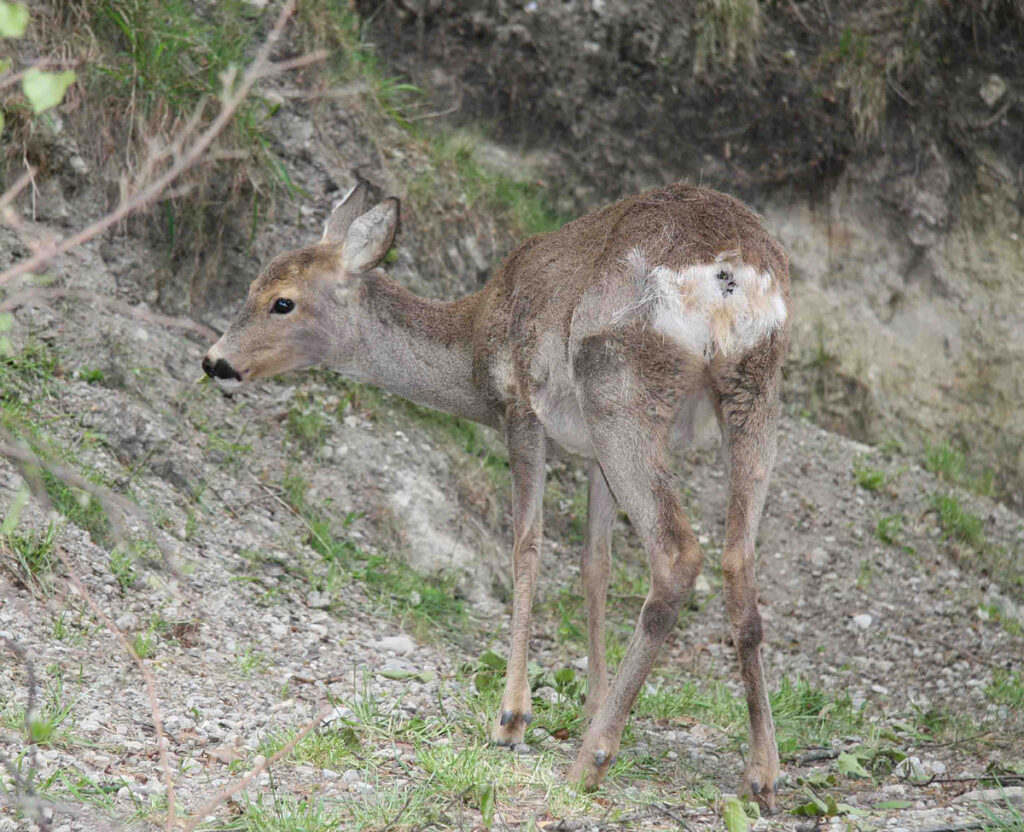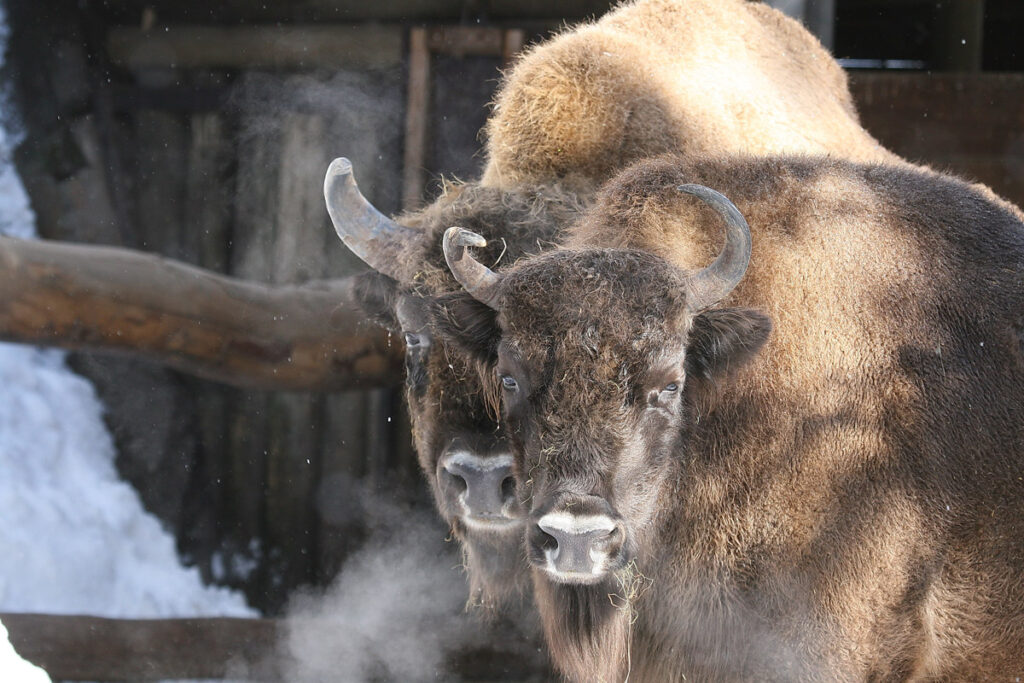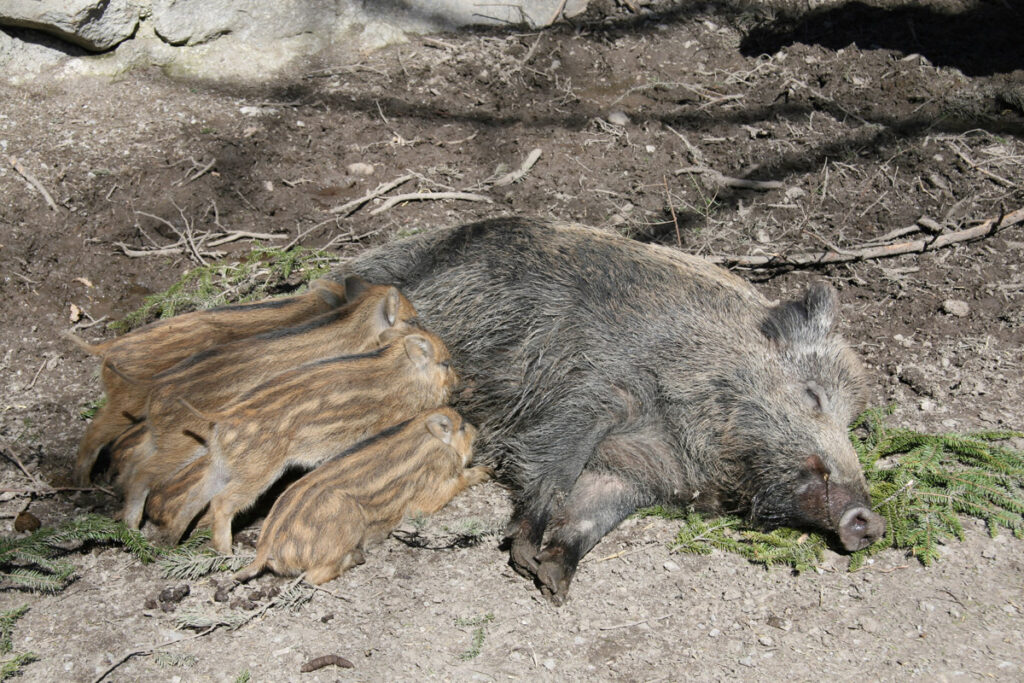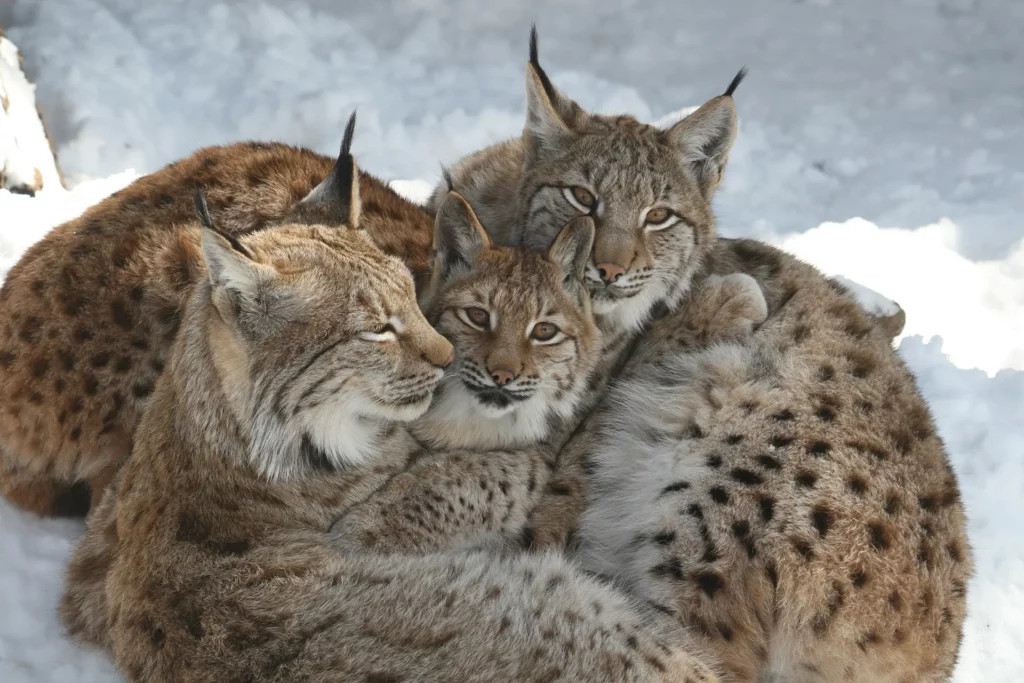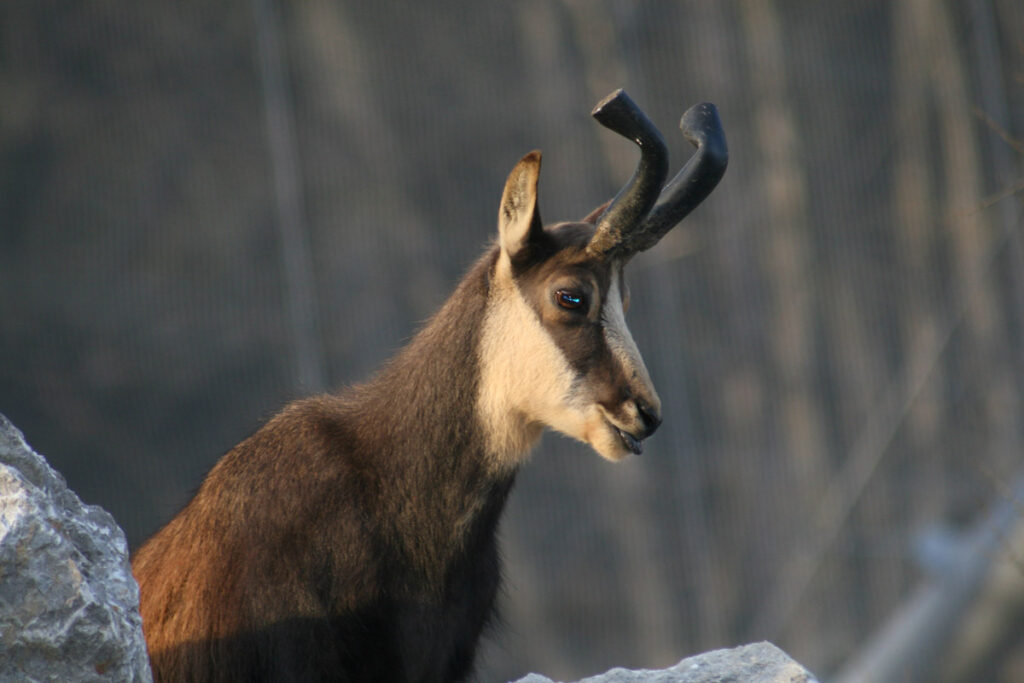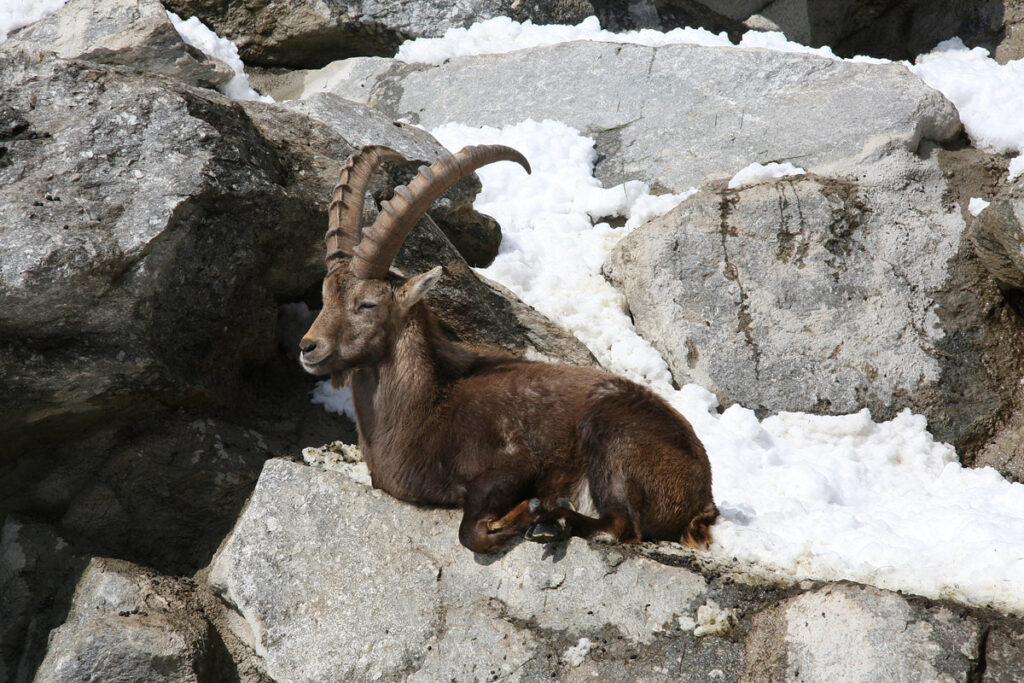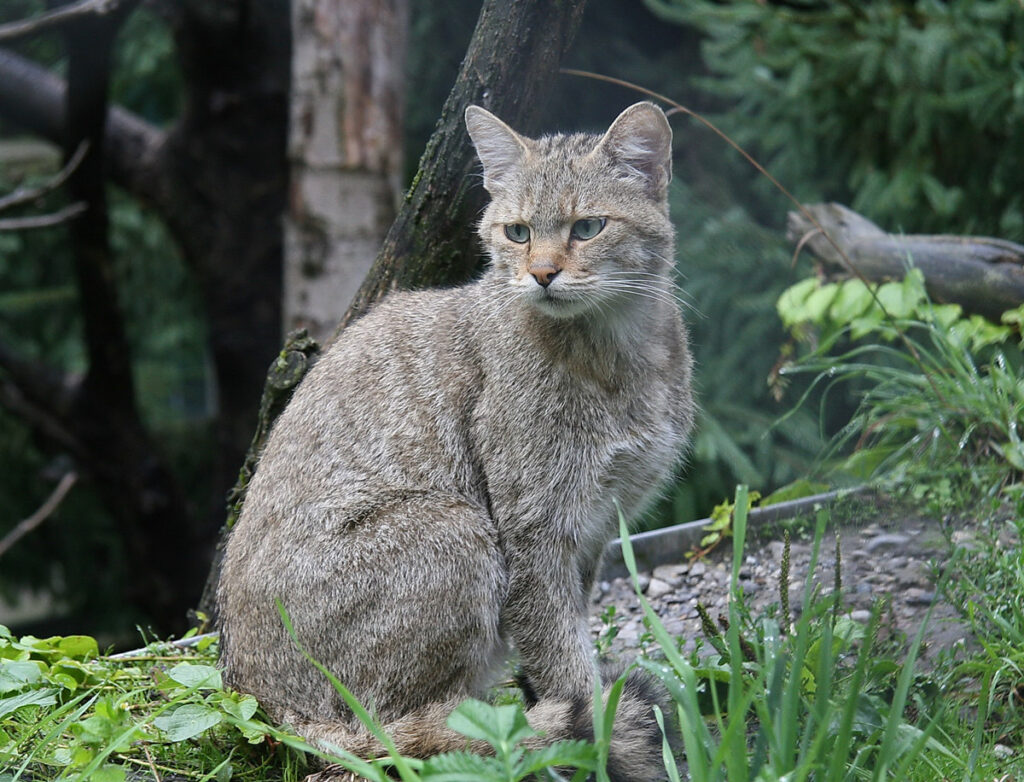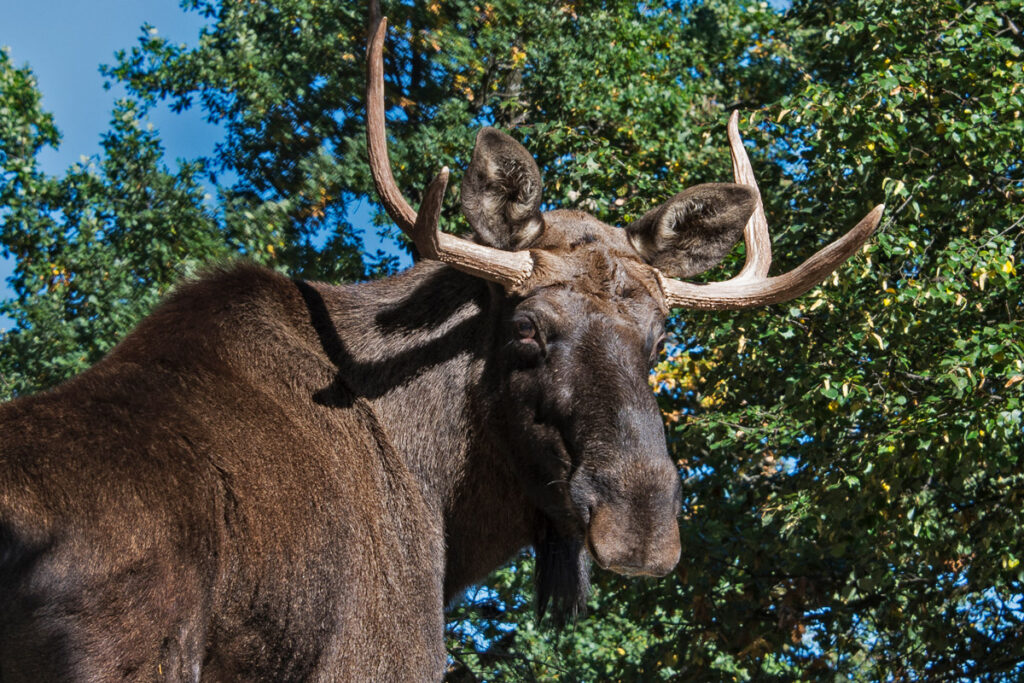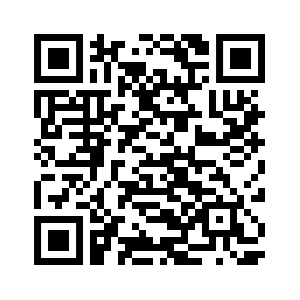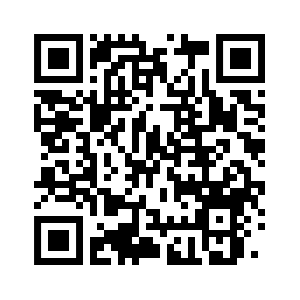Brown bear
Depending on whether the female bear has been able to put on a lot of fat over the summer and autumn months, up to three fertilised eggs may nest in the uterus, depending on the amount of fat stored. She then awaits her tiny offspring in the winter camp. A bear cub has a birth weight of around 300 g, the mother weighs five hundred times more at this time! Bears are omnivores, but feed mainly on plant food. A bear can, or rather must, eat up to 30 kilograms of berries – mainly blueberries and cranberries – to get through the barren winter months. During hibernation, the bear only loses fat cells, the muscle cells remain completely intact. As to how the bears manage to do this is still almost unknown to science. While bears avoid people in the wild, they are not shy in the zoo. Animal keepers may only enter the enclosure for cleaning when the animals are kept in the bear house. Direct contact could be fatal!
- The bear likes to be on its own – both sexes only come together during the mating season in the spring months. After several days of being together, the two separate once more – in bears, only the female takes care of the offspring.
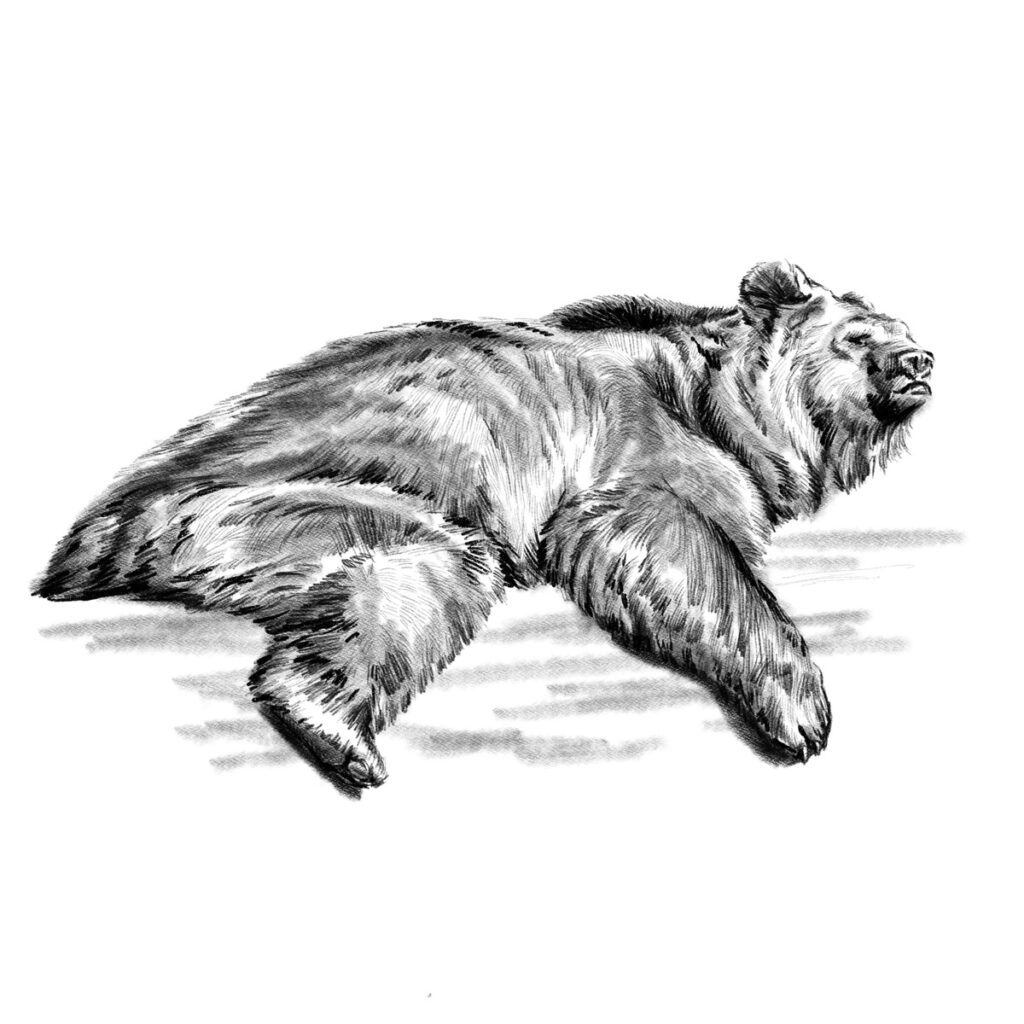
Scientific Name
Ursus arctos
Age
- up to 25 years
Nutrition
- Roots
- Grass
- Fruits
- Insects
- Carcass
Adversaries
- Humans only
Weight
- 120 to 300 kg
1,5 – 2,5 m
Other mammals
We look forward to seeing you
Experience a fascinating world full of adventure and amazing animal encounters. Plan your visit to the zoo now and immerse yourself in the heart of nature!
